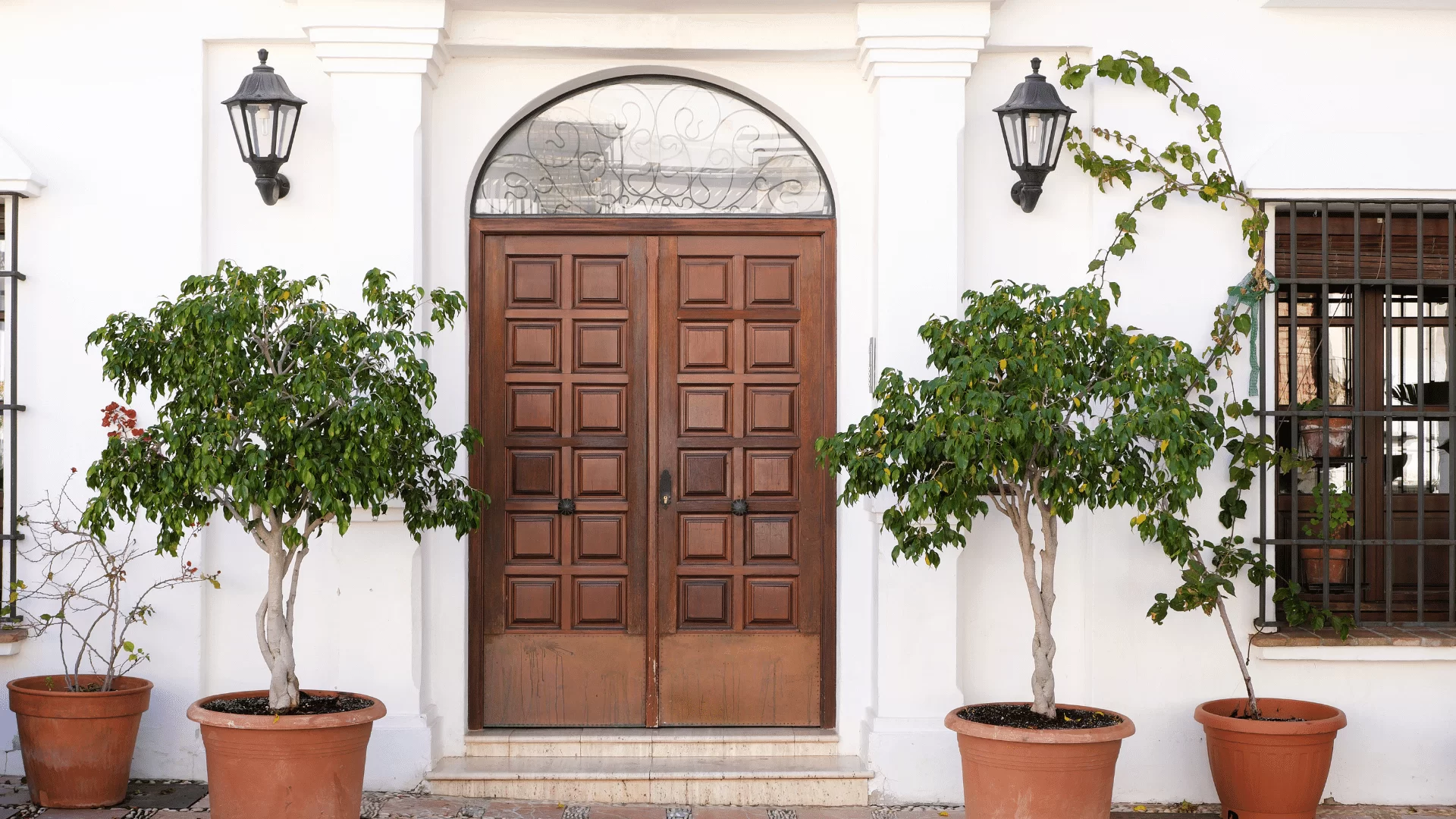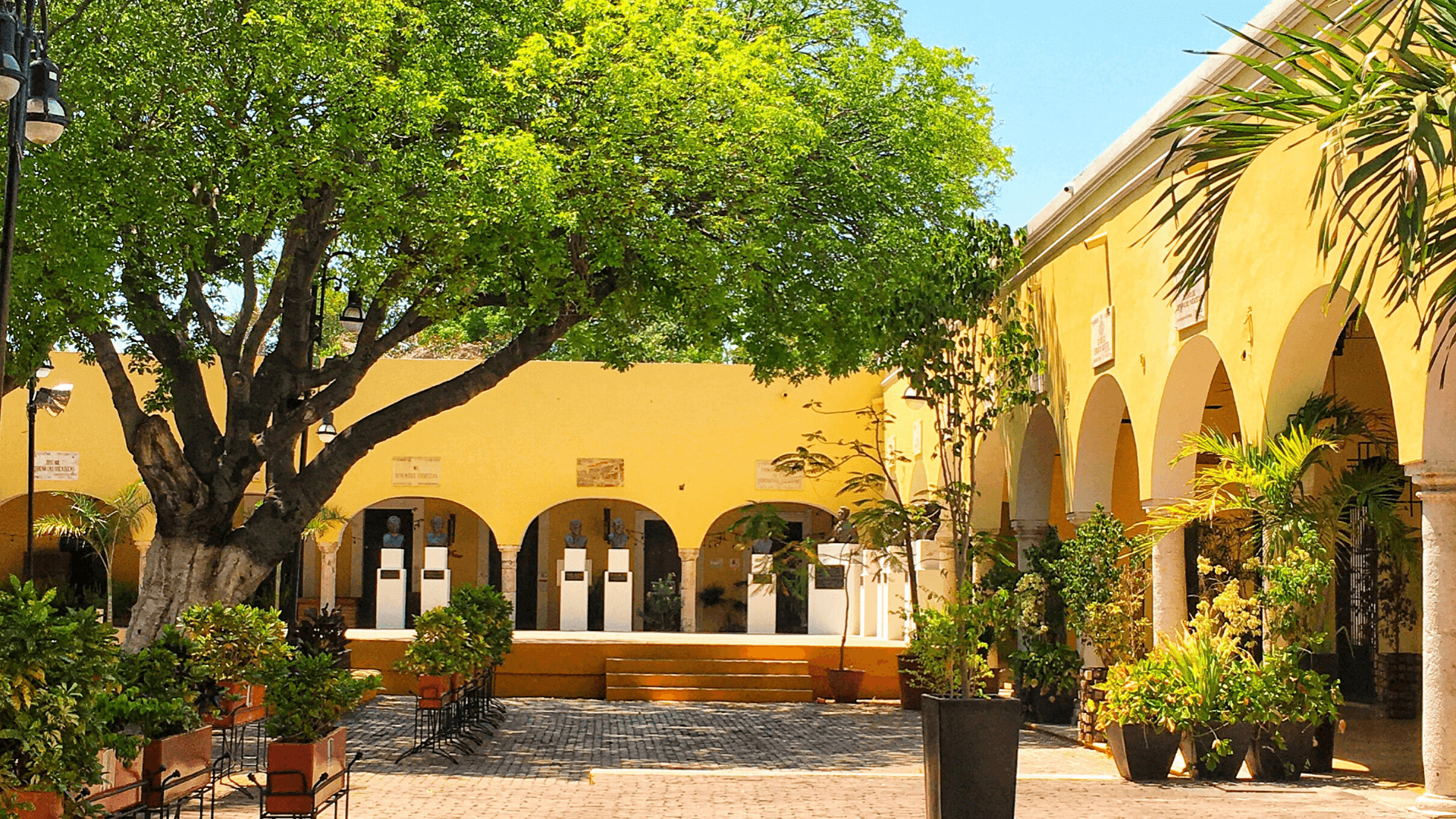Part of the charm of Mérida are the charming neighborhoods, especially in Centro. The Neighborhoods in Mérida Centro are listed in this article with a little bit of history and activities in each one. One thing to keep in mind, there are no lines of demarcation between the neighborhoods. All of these neighborhoods have the same zip code of 97000. As you visit them one by one, you will begin to learn where the fuzzy boundaries are!
Santa Lucia
Santa Lucia Park and Church – Calle 60 y Calle 55
It’s no surprise, the closest Colonia to the Plaza Grande, Santa Lucia, plays an important role in the history of Mérida. Locals and visitors alike watch beautiful dancers, learn about Yucatecan history, and enjoy the beautiful weather.
Dedicated to General Sebastián Molas, the obelisk was constructed with a broken tip as a way to symbolize his short life. Built-in 1878, its original marker read (English translation), “Here lie the remains of Colonel Sebastián Molas, Hero of the Caste War.”
Santa Lucia Activities:
Yucatecan Serenade
Every Thursday 9:00 pm
Since 1965, an open-air event with live music, local history; exhibiting traditional costumes and dancing.
Local Vendor Market
Every Sunday 11:00 am
A lively market with food vendors, traditional clothing, hammocks, jewelry, and a variety of other handmade items.
Visit the church to find other event postings on their bulletin board.
Santa Ana
Santa Ana Park and Church – Calle 60 y Calle 45
Santa Ana church is easily identified by the pyramidal spires as well as the raised platform foundation, most likely a former Maya temple platform. The belief is that Santa Ana was the city’s farm where plantations grew food for the city.
Imagine this . . .
In the 1700s, it served the northernmost barrio of colonial Mérida with a large population of indigenous Mayans and mulattos.
Several galleries and museums are located in this established and growing art district. Santa Ana also has a lovely small market with vendor stalls, fresh fruits, and vegetables.
A popular group of cocina economics (small local kitchens) all serve traditional Yucatecan foods and fresh juices.
Just one block to the south, you will find more restaurants and tourist shops along Calle 47, which connects to the Paseo de Montejo.
Santa Ana Activities:
Vendors set up here frequently – seems to be more of a “pop-up” style market sometimes with no rhyme or reason to the days/times. These vendors set up on evenings and weekends as well as other days of the week. Santa Ana Park is a gorgeous place to visit during Christmas. Fairy lights form a canopy in the plaza over the park’s central area. It is quite magical to visit during the holidays.
Visit the church to find other event postings on their bulletin board.
Santiago
Santiago Park and Church – Calle 72 y Calle 59
Another of the oldest Colonias in Mérida, the church of Santiago, was founded in 1637. Little remains of the original structure other than a modest sanctuary with a baroque statue of Santiago and a dated inscription at the entry.
Check this out . . .
Approximately 350-400 years ago, Santiago was the area relegated to the indigenous Indios and artisans. Later it was the German district. Before Paseo de Montejo was built around the turn of the century, Santiago was considered the nicest place to live in Mérida.
Calle 59 was the main formal entrance into Mérida after Porfirio Diaz built the Centenario Zoo and Parque de La Paz. The Santiago Market is one of the best in Mérida with a variety of fresh fruits, vegetables, eggs, flowers, fresh juices (made on the spot), and a meat market.
A host of excellent cocina economics, clothing, sundries, and even an ice cream shop is found here. The center of the park has a beautiful water fountain with many trees where you will find people relaxing in the shade.
Santiago Activities:
Remembranzas Musicales
Every Tuesday 8:30 pm
This event brings residents and tourists together to dance the cha-cha, the mambo, salsa, and other Latin dances to live, Big Band music under the stars.
Visit the church to find other event postings on their bulletin board.
San Juan
San Juan Park and Church – Calle 69 y 62
Located just four blocks south of the Plaza Grande, the church of San Juan is my favorite in Mérida. This church dating back to 1770, is breathtaking with its magnificent yellow color, architectural details, and magnificent presence in the park.
The San Juan arch marks the most significant gate to the city. It was rebuilt in 1790 during the government of Lucas de Gálvez y Montes de Oca.
Remember the large shopping market, Lucas de Gálvez? Yes, it’s the same dynamic don.
The text on the plaque of the arch states, “The Year 1790. Owing to the personal intervention, zeal, and prudent policy of the Governor Captain General of this Province, the lord don Lucas de Gálvez was able to inspire the generous stimulus of the Pueblo, lovers of the common benefits of liberty, in whose name were provided the funds for the opening and construction.”
There is a garden and fountain in the park adorned by a bronze statue, known as the “Little Black Girl of San Juan.” During this time, lantern bearers were entrusted with keeping the peace and would announce, “It’s twelve o’clock, and all is serene.” (I just ADORE all these little bits of history!)
In 1810, the chaplain of the church don Vicente María Velásquex y Alvarado was the spirit of the “San Juanistas” and is attributed to the first movements for Independence.
San Juan Activities:
Paseo de las Ánimas
Annually – last week in October
The Paseo de las Ánimas is part of the Dia de Muertos celebrations. People meet in the General Graveyard (Calle 81A x 90, Centro) and join in a type of parade as they walk to San Juan Park. Everyone dresses in Yucatecan traditional clothes with painted skulls on their faces. Upon arrival at the park, enjoy traditional snacks and sweets sold by vendors, and watch cultural shows and presentations.
Visit the church to find other event postings on their bulletin board.
San Sebastian
San Sebastian Park and Church – Calle 75 y 72
In colonial times, San Sebastian was part of an area given by the senior Francisco de Montejo to his son. Wanting large estates to be built, he removed Indigenous Mayas from outlying and relocated them into the area now known as San Sebastian.
For hundreds of years, this was the area where the disenfranchised local Mayans and lower class immigrants lived “passing their days outside the city walls, living in homes of stone and straw, or in the dark and dusty streets and plazas.”
Get this . . .
In the early 20th Century, San Sebastian was a dangerous area known as Barrio Bravo, where young men fought amongst themselves and other barrios.
For what it’s worth, rumor says the metal fence surrounding the courtyard of the government offices on Calle 75 was built with the muzzles of rifles repurposed after the Mexican Revolution.
A wonderful food market with fruit and vegetable stalls, butchers and cocina economicas are on both sides of Calle 70. You can dine on Yucatecan food under the stars! These particular restaurants are very popular with locals and are quite busy on weekend nights.
San Sebastian Activities:
Invocation of Our Lady of the Assumption
Annually August 3 to 15
Enjoy San Sebastian’s famous fería, complete with voladores (homemade bottle rockets), papier maché bulls, and music.
San Sebastian is known for its fairs. Throughout much of the year, booths with penny arcades are ready around the park, sometimes with Ferris-wheels and merry-go-rounds.
Visit the church to find other event postings on their bulletin board.
La Ermita
La Ermita de Santa Isabel Park and Church – Calle 66 y 77
The names La Ermita or Ermita and San Sebastian are interchangeable. You may hear San Sebastian and Ermita referred to like the same area; however, they both have their unique personalities.
Dedicated to Nuestra Señora del Buen Viaje or Our Lady of the Good Journey, the Ermita Church was originally built in the 1700s as a wayfarer’s shrine.
Our Lady of the Good Journey is Mérida ‘s equivalent of Saint Christopher.
This was the last place to say your prayers before you set out to Campeche, a dangerous trip west.
There is a notion that the garden has ghosts as well as dotted with signs describing Maya and colonial sculptures no longer present.
For access to the garden, leave the church and go to the right-hand side.
- Look for a door.
- Give it a knock.
- Gain entry.
There is a small, interesting, beautiful patio, a garden of medicinal and ornamental plants and trees along with with with a variety of flowers, ferns, and shrubs; all native Yucatecan species. Entry is free, and there should always be someone available to open the door.
The park in front of Ermita’s church was also renovated a few years ago with a new playground, Wi-Fi connections, and computer docking stations. The streets around Ermita have been reset and repaved with the original bricks.
Ermita Activities:
Mostly centered around local celebrations and events.
Visit the church to find other event postings on their bulletin board.
Mejorada
Mejorada Park and Church – Calle 50 y 57
The very first hospital in Mérida was built in Mejorada in 1562. Between 1688-1694, the Franciscans in Mérida built two sets of churches and convents. One disappeared, and the other called “Del Transit of Our Lady” or La Mejorada
This building had many different uses before becoming home to the Faculty of Architecture UADY. This building adjoins another important Franciscan colonial building, the Dragon Cavalry, the former headquarters of the military garrison of Mérida.
In this tranquil park, look for a large, bronze sculpture commemorating the Niños Heroes de Chapultepec. Local youth sometimes use it for dance or parade practice.
There is no market in the neighborhood, but the central Mercado Lucas de Galvez is only a few blocks to the south. Believe me when I say you must visit this vast market full of everything you can imagine.
If you need help moving furniture or a task to see the need for a truck, go to the east side of the square to find men and crews to help you. On the west side of the park are the Spanish restaurant, El Segoviano, the famous Los Almendros restaurant, and the Museo del Arte Popular, the museum of Mexican popular arts and crafts.
Mejorada Activities:
Mostly centered around local celebrations and events.
Visit the church to find other event postings on their bulletin board.
San Cristóbal
San Cristóbal Park and Church – Calle 50 y 69
In the 1540s, Francisco Montejo and his conquistadores set aside this area to house the Indians from Central Mexico who helped them conquer the Mayans. San Cristóbal Church, called Our Lady of Guadalupe, was the last one that Spaniards built in the Yucatán with its foundation stone laid in 1757.
An interesting fact . . .
During the rapid growth of the city, it was difficult to travel to San Cristobal because of a high hill and a street called “The Street of the Impossible.” This extraordinary neighborhood gave shelter to five cultures: Maya, Mexican, Spanish, Mestizo, and Arab.
A natural choice, Lebanese immigrants established their businesses and homes in San Cristobal.
Undoubtedly, histories assure us San Cristóbal appeared, for a time, to be like a suburb of Beirut or Damascus. From this cultural Colonia, two institutions of Yucatecan cuisine originated: the tortilla and the kibi.
The church is reminiscent of the Cathedral in the Plaza Grande. It also shares its recessed shell archway with the church in Uman. Take some time to enjoy the magnificent Moorish choir window featuring the Virgin.
A stairway of 129 steps takes you to the nave’s interior gallery with a neoclassical stone retablo, reportedly sculpted by an imported European sculptor. The inscription in Latin above the entrance reads, “This is the House of God and the Gate of Heaven.”
This area remains the main entrance to Mérida from Chichen Itza and Valladolid.
San Cristobal Activities:
Annually – December 12th
Virgin of Guadalupe Celebration
Visit the church to find other event postings on their bulletin board.
Garcia Gineres
Las Americas Park and Our Lady of Fatima Church – Calle 20 y 23
Originally the land of the Hacienda Datil y Limon meaning date and lemon), Señor Don Joaquín García Ginerés purchased this part of Mérida and is his namesake.
When she moved to Mérida in the 1960s, Joanna Rosado author of ‘Tomando Agua de Pozo’, recalled García Ginerés as far out of town and crisscrossed by dirt roads.
On wide streets, you’ll see a variety of house styles from art deco to colonial to European to modern, most less than 50 years old.
You won’t want to miss this . . .
Mayan Art Deco style (also seen in the Monumento a la Patria on Paseo de Montejo) influenced the Parque de Las Americas. Monuments throughout the park pay homage to all the different countries of North and South America, built to represent the unity of the American people, pre-Hispanic cultures, and socialist ideals.
The park features a large fountain, a performance half-shell or concha open-air auditorium, the Jose Martí cultural center, and a fenced-off section reserved exclusively as a children’s play area.
Believe it or not –
Rumor says a cenote lies underneath the concha. Many cultural and athletic events, award ceremonies, and celebrations happen in the park on the weekends.
Our Lady of Fatima church reflects an enchanting art deco style and gorgeous stained glass windows.
Garcia Gineres Activities:
Slow Food Market
Every Saturday 9:00 am – 1:00 pm
Part of the worldwide Slow Food network (the opposite of fast food), the goals preserve culinary traditions, focus on regional organic produce, and encourage healthy eating. Arrive early for the best selections as vendors tend to run out of their products closer to noon. Bring shopping bags.
Visit the church to find other event postings on their bulletin board.






